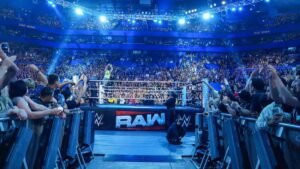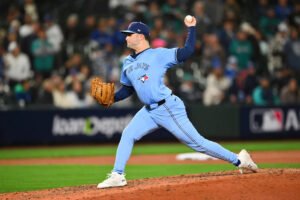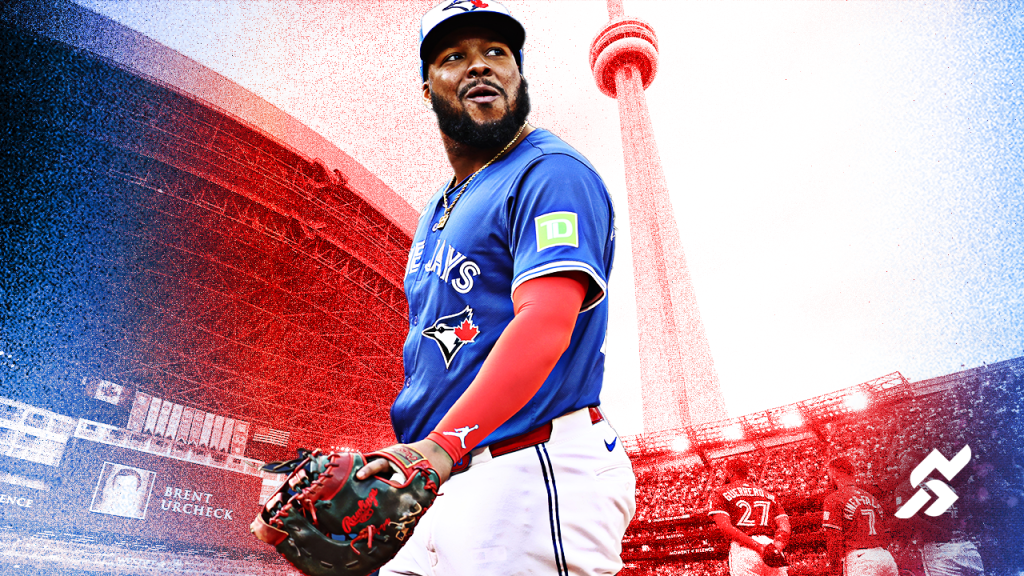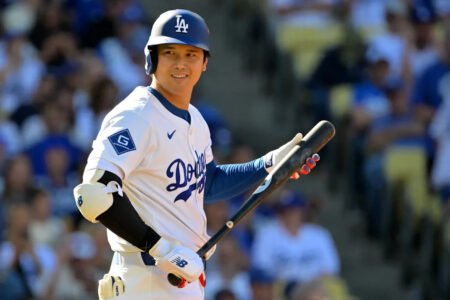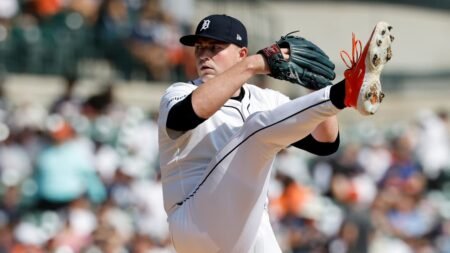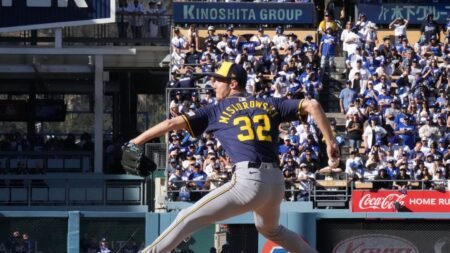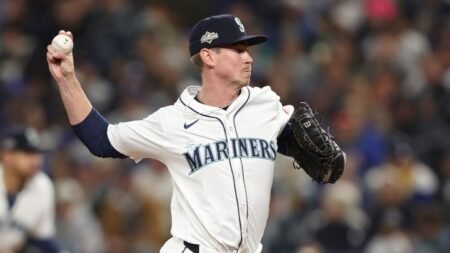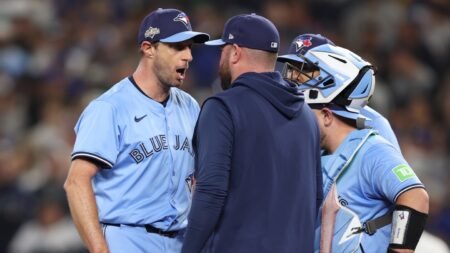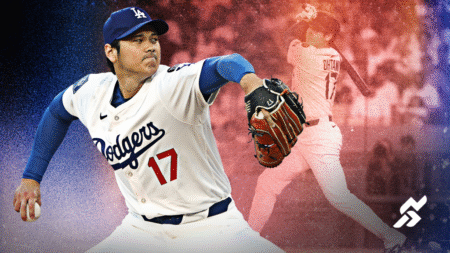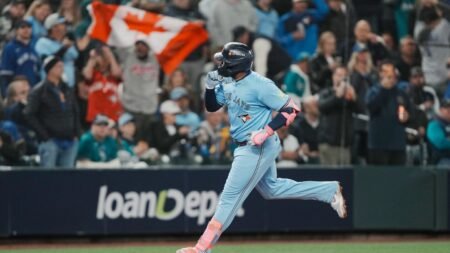The Toronto Blue Jays are trying to make Canada proud, but thus far, they are falling short in the American League Championship Series. They head to Seattle for the next three games of the best-of-seven series down 2-0, after the Mariners dumped them 10-3 at the Rogers Centre in Game 2 on Monday.
The Jays face long odds against the Mariners, the only one of Major League Baseball’s 30 teams to have never qualified for the World Series. The M’s have an 89% chance of erasing that dubious distinction if they can win two of the last five games.
It’s an interesting juncture for pro baseball in Canada, considering there’s a group canvassing the Montreal business community with the intent of bringing the Expos back to Quebec in the form of an expansion franchise. But this time is not yet comparable to 1992 and 1993, when the Jays won both their World Series appearances and the Expos were still thriving before leaving for Washington and becoming the Nationals in 2005.
In 1993, three future National Baseball Hall of Famers were in the Toronto lineup—Rickey Henderson, Roberto Alomar and Paul Molitor. And Joe Carter hit the walk-off homer that won the series and Game 6 at what then was called Toronto’s Skydome against the Philadelphia Phillies, inspiring the legendary “Touch ‘em all, Joe!” call from the late, great Ford C. Frick Award winner Blue Jays announcer Tom Cheek.
The previous year, another Hall of Famer, Dave Winfield, smacked the series-winning double in the top of the 11th inning of Game 6 against the Braves at old Atlanta Fulton-County Stadium.
None of the above players were developed by the Blue Jays; they were all procured by then-GM Pat Gillick, who later was also elected to the Hall of Fame.
Are you sensing a pattern here? These players providing some of the top moments in Canadian baseball history were all short-timers in the Blue Jays organization.
It’s been 32 years since the last World Series win, and the Blue Jays have only been as far as the ALCS three times since then, including the current series. But Toronto remains the shining baseball light in Canada.
The Blue Jays are owned by Rogers Communications, which also has an 80% share of Maple Leafs Sports & Entertainment. Rogers bought 80% of the baseball team in 2000 for $112 million and acquired the other 20% four years later for a total price of $165 million. According to Sportico’s most recent MLB valuations, the Blue Jays are worth $2.39 billion. Which means the valuation trajectory for Canada’s baseball team looks like, yes, a hockey stick.
With revenues of $435 million in 2024, they can afford a player payroll of $280 million for luxury tax purposes, which ranks fifth in MLB. It’s no wonder the record 0f 94-68 was their best during the regular season since 2015. The money was good enough to tie the New York Yankees for first place in the AL East. It was good enough to defeat the Yankees in a four-game AL Division Series.
They spent a good chunk of money earlier this year by signing superstar Vladimir Guerrero Jr. to a 14-year, $500 million contract extension.
With at least 89 wins four of the last five seasons, the Blue Jays are perennially competitive. But barring a spirited comeback against the Mariners, Canadians will have to be satisfied with that.
A group called Players on Base is trying to raise capital and interest to bring baseball back to Montreal. They point to the Blue Jays financial growth as an example of what could be duplicated in Quebec with its French-speaking population and international ties this time around.
“What we tell the investors is that if you get in now the valuation of the franchise is just going to go up,” Michel Frison, who’s pounding the pavement on behalf of the effort, said in a recent Zoom interview. “Part of starting this group is just to understand the business. Every week we have a new lead.”
The Expos were the first MLB team in Canada, but they had bad luck and equally poor ownership. They lost a National League Championship Series to the Los Angeles Dodgers after the strike-shortened 1981 season on a Rick Monday homer, and they were frozen in first place in 1994 when another strike wiped out the end of that season. They played in the cavernous Olympic Stadium, which seated 50,000 for baseball, and had an animated chicken flash across the video board when a pitcher tried to pick off a runner at first base.
The stadium had an umbrella roof that finally had to be locked closed for good because of mechanical problems. When then-owner Jeffrey Loria couldn’t get the government to build a new ballpark, he flipped the team for the Florida Marlins in 2002, and the Expos were run by MLB for their final three years in Montreal before moving to Washington, D.C.
In the team’s last season, when it was a fate accompli the Expos were leaving, only 748,550 attended “home” games, with 21 of them played in Puerto Rico’s Hiram Bithorn Stadium.
The Big O is undergoing a government-sponsored renovation costing $870 million Canadian dollars ($619 million) that includes a fixed roof with a glass ring to allow in natural light. It’s slated to reopen and be ready for baseball again by 2028. But Frison knows that the Olympic Stadium is only a short-term fix and says a new ballpark has to be part of the mix.
When expansion comes again in MLB, the fee will be somewhere in the neighborhood of $2 billion, per commissioner Rob Manfred. A new ballpark will be expensive, too; the estimated price of the proposed closed-roof 33,000-seat facility for the A’s in Las Vegas is, likewise, $2 billion.
Frison said he spent 30 years in the aerospace industry and doesn’t personally have that kind of money, and he’s having a hard time finding it. “People are interested, but we’re looking for the lion owner,” he said. “We’re focusing forward and need that majority guy.”
That’s a lot of baseball movement needed north of the border to make every Canadian fan proud.
Read the full article here
